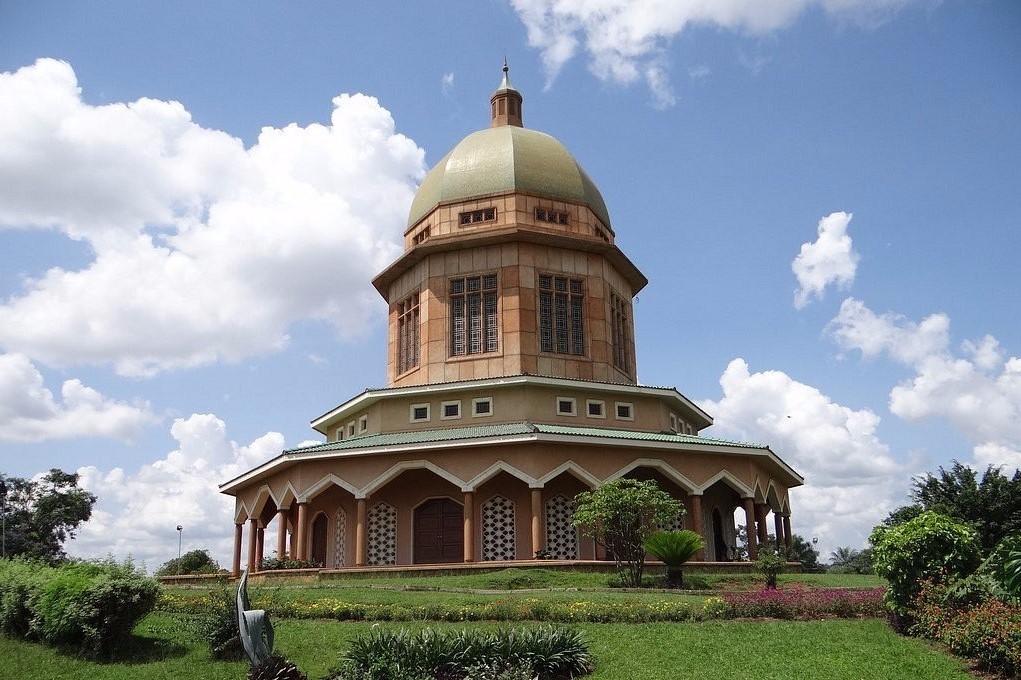The Bahai Temple of Uganda: A Symbol of Unity and Peace.
Imagine the hills of Kikaya, Kampala, Uganda, where this Bahai Temple nestles, pushed out into the green teeming life that nook of Africa offers. It is a refuge for tranquil bonding-a living, breathing testimony to unity, inclusiveness, and hope, one which grants a sense of community, all in one human family despite differences.
The Heart Behind the Bahai Temple.
The Bahá’í Faith, founded by Bahá’u’lláh in the 19th century, has its base in belief in the oneness of God, religion, and mankind. Among several magnificent temples in the world, each carrying this great message of unity known as the Bahá’í Temple of Uganda, it stands out.
Construction for this architectural marvel began in the early 1950s, and the officials inaugurated it in 1961. Charles Mason Remey designed the temple, but he indeed took an active part in suggestions put forward by Ugandan architect Enoch Nsuguya. The design really merges traditional African motifs with a modern element. The result is a building that nestles perfectly among the surroundings and proudly proclaims the Bahá’í commitment to inclusiveness.
A Marvel in Every Sense.
The nine-sided shape of the Bahai Temple carries with it spiritual meaning associated with the number nine within the Bahá’í Faith. Its gleaming white façade of marble is a spectacle to behold under the African sun, ensuring that only peaceful energies are emitted-and almost otherworldly. The interior continues to be much of the same with eloquent wood carvings depicting Uganda’s rich cultural heritage.
But it’s not just the building that intrigues-there’s this aura of calmness in the gardens that surround it. The well-manicured lawns are a haven to which to retire and contemplate, amble through, and consider peaceful messages of love, oneness, and concord inscribed on plaques from the Bahá’í holy writings.
A Beacon of Hope on Kikaaya Hill.
Sited on a plateau with dramatic view, this Bahai House of Worship – a nine-sided building known as “Mother Temple of Africa” – represents the nine major religions of the world. It is a beautiful, living symbol of the Bahá’í belief in the unity of all religions and people.
The moment one steps onto the grounds, the calm washes over one: the soft rustling of leaves, the hum of quiet prayers, the vision of the majestic dome reaching to the sky-all evoke introspection and a deep sense of connectedness to something greater than the self.
Unity in Diversity at The Bahai Temple.
But the thing that really sets the Bahai Temple apart, however, is that it embraces anyone, regardless of race, religion, or background. This is a place where members of different faiths and backgrounds meet in open discussion, exchanging ideas for the service of all people. It’s that place which rejoices in the beauty of diversity, yet at the same time pays homage to the deep ties which bind us all.
A Hub for Community and Nature.
Beyond its spiritual role, the Bahai Temple plays an active role in local life through educational and social events it organizes, and various grassroots initiatives it undertakes for the betterment of the people in the surrounding communities. These include health clinics and literacy programs to develop and empower the people of Uganda.
The temple is also an example of environmental stewardship: with immaculate gardens displaying the richness of Uganda’s flora and fauna, in addition to solar panels reducing the carbon footprint. That’s one nice reminder of the Bahai commitment toward sustainability and the care for the Earth.
A Journey of Peace.
The Bahá’í Temple soars as it gives hope to a world often torn by conflicts with the reminder that we could achieve peace, unity, and understanding. It epitomizes the vision of the Bahá’í Faith for one plan, one pattern toward a better, harmonious world of love, justice, and equality in which every soul has worth and every voice is meaningful.
How to Visit The Bahai Temple of Uganda.
A visit to the Baha’i Temple of Uganda literally places you just a stone’s throw away from the hustle and bustle of Kampala. Flying in, taking a taxi, or for a little more adventure on a boda-boda, a motorbike taxi, up Kikaaya Hill promises excitement and enlightenment in the journey upward.
It is a steep hill, yet at each step, it greets you with surprises. Till, at the top, your eyes unfold with scenes that leave you speechless. And as soon as one steps onto its soil, it surrounds one immediately with serenity and peacefulness, which invites your reflection, exploration, and connection with this great space.
The Experience That Lingers On.
The Bahá’í Temple of Uganda should not only be viewed as a tourist spot but also as a spiritual oasis. You will find this temple to be much more than just a building as you take your leisurely walk in the gardens, take your photo shoots, and engage in some interesting conversations with this friendly Bahá’í community. This is a meeting point of people who come together in the expression of their humanity and find peace in which to invest into the world for a better future.
It is not the beautiful architecture and surroundings you take with you, but the spirit of unity and connection when you leave; a feeling to be with you a long, long time after you’ve left Kikaaya Hill. What I mean to say is that even in the busiest of cities, and in the most divided of times, there is always a place for peace, understanding, and togetherness.
Be prepared, then, as you enter the Bahá’í Temple of Uganda, for a journey not only of the body but of the heart and soul-one that will change you forever.












